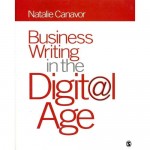Keep it simple–or else!
If you want your readers to understand you, keep it simple.
You may be surprised by the American public’s low level of reading comprehension. More than 40 percent of adult, English-speaking hospital patients didn’t understand the following sentence:
Do not take this medication on an empty stomach.
This is according to Roger Lehrman’s “The Political Speechwriter’s Life,” which appeared in The New York Times (Nov 4, 2012). Yikes, this is scary.
Americans read, on average, at a seventh-grade level, according to Lehrman. If you want to reach them, you must write at their level. Here’s what Lehrman says about this:
You can’t hand your boss a speech saying, “It’s got all of your ideas. But 40 percent of your audience won’t know what you’re talking about.”
If you’re writing for a general audience, use plain English and keep it short. Short sentences also tend to be easier to understand.
What about writing for college-educated audiences?
You may think, “But my clients and prospects are all college-educated. Why should I keep it simple?”
Here’s my reply: your writing’s grade level is a measure of how hard you’re making your readers work to understand you. If you make their lives easier, they’re more likely to stick with you.
If your readership includes some more sophisticated readers, you can still appeal to them. I discuss some of these techniques in “How to make one quarterly letter fit clients at different levels of sophistication.”
Tools to help you assess your writing
To get a sense of your writing’s grade level, use the readability statistics in your word processing program or Hemingway App. If the numbers say you’re writing at a high grade level, you may benefit from rewriting your text.
Image courtesy of David Castillo Dominici / FreeDigitalPhotos.net
April 2018 note: I replaced a no-longer-available tool with Hemingway App.





